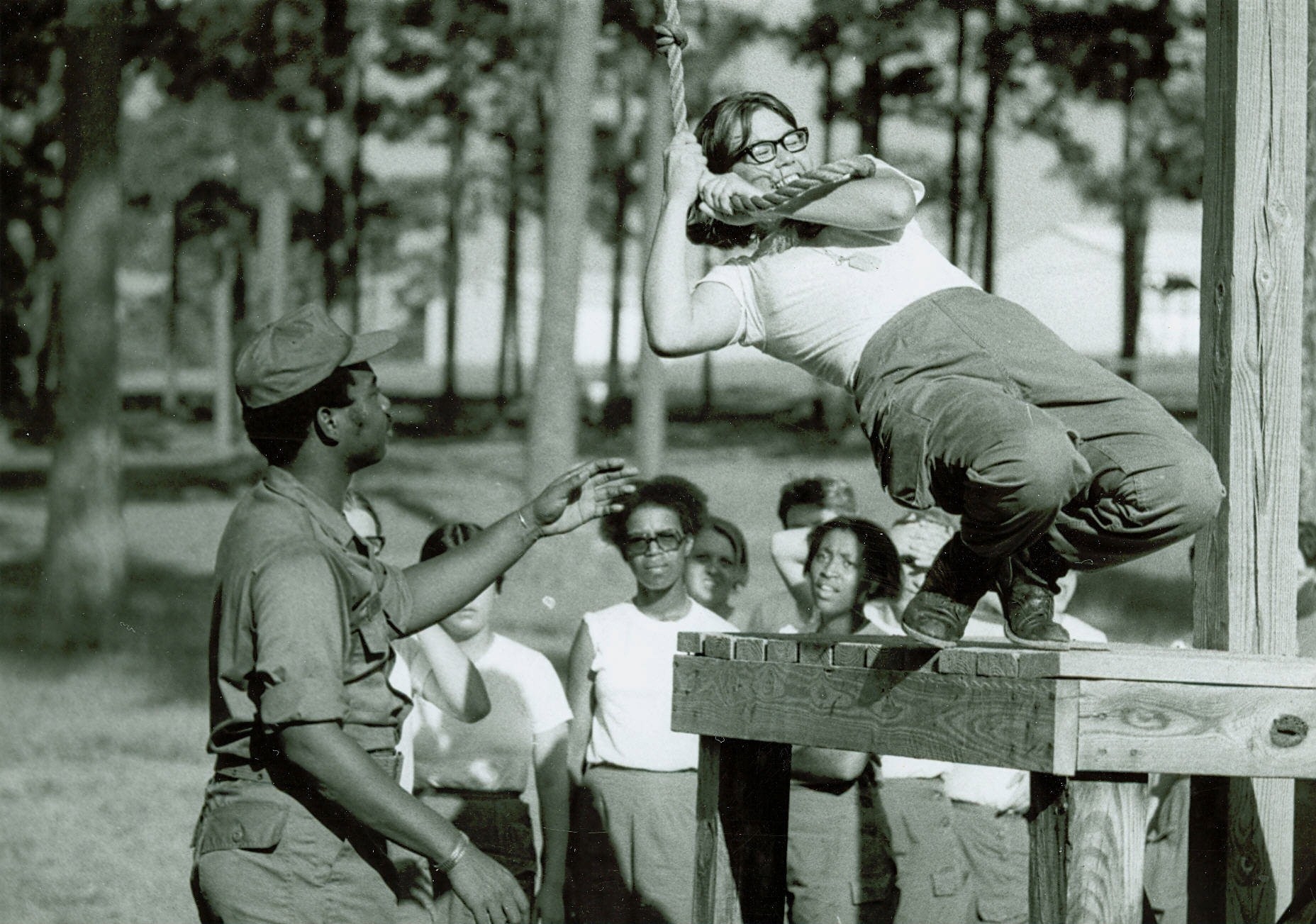U.S. Army Training and Doctrine Command’s 50th anniversary is July 1, 2023. In celebration, the TRADOC Communication Directorate in collaboration with the TRADOC Military History and Heritage Office, is sharing an article series highlighting key moments in TRADOC’s history to include the evolution of training, AirLand Battle, and gender integration.

With the establishment of the all-volunteer force in 1973, the Army viewed increasing women’s participation as critical to meeting recruitment goals. But questions arose about the roles of women service members in the Army. Consequently, in 1975, Gen. William E. DePuy, commanding general of the new U.S. Army Training and Doctrine Command, directed an analysis of the Army’s personnel requirements to determine the effect of expanded female participation on unit effectiveness. In conjunction with U.S. Army Forces Command, TRADOC ran a field exercise (MAX WAC) with support companies composed of 10 to 35 percent women. The October 1977 findings indicated the number of women in the unit had far less effect (5 percent) on unit performance than such factors as leadership, training, morale, and personnel turnover. The study also concluded that women were not receiving adequate basic training. Based on the results of MAX WAC analysis, DePuy ordered Women’s Army Corps training include proficiency with weapons and defensive tactics. These changes meant WAC basic training was now on par with the basic course men underwent.
In anticipation of the abolishment of the WAC in 1978, TRADOC tested a successful gender-integrated Basic Combat Training course at Fort Jackson, SC in the fall of 1976. TRADOC instituted the course at the same location on October 2, 1977. Women were integrated down to the company level. Four basic training companies had three male platoons and one female platoon, while one company had two male and two female platoons. Although the Women’s Rights Movement was in full swing, gender-integrated training was a culturally and politically contentious program. The Army discontinued coeducational basic training August 30, 1982. The informal reasoning was that men were not being physically challenged enough in integrated training. Although basic training would remain the same for both genders, male and female recruits would be segregated at the company level and below.

Although social and political critics of gender-integrated training often raised the specter of women in combat, experience in the field drove home the effectiveness of gender-integrated units. For example, the largest deployment of military women to a war zone in U.S. history during Operation Desert Shield and Operation Desert Storm spurred TRADOC to return to gender-integrated BCT, which resumed in October 1994 at Fort Jackson, SC, and Fort Leonard Wood, MO. TRADOC thereby maintained its principle to, “train as you fight.”

However, just two years later, gender-integrated training faced serious challenges after the conviction of several Army drill sergeants for sexual assault. Secretary of the Army Togo West announced it was not gender-integrated training that should be blamed but, rather, some leaders’ failure to uphold the code of conduct. The selection, training, and supervision of drill sergeants also had to improve. A September 1997 action plan tasked TRADOC with developing training that would establish an Army culture in which Soldiers treat one another with dignity and respect. TRADOC added a week to basic training that inculcated Army values, appropriate behavior, and team-building.
More recently, gender-integrated training continued to prove its worth on the battlefield. Military technology and the nature of counterinsurgency fighting in Iraq and Afghanistan blurred the lines between combat and noncombat duty. Necessity often forced military commanders to assign Soldiers without regard to gender, and the resulting mixed units and crews bonded into cohesive, effective teams throughout operations in the Middle East and Southwest Asia.
A future article in this series will address another way in which TRADOC led the integration of the military workplace —the opening of all Military Occupational Specialties to women.
